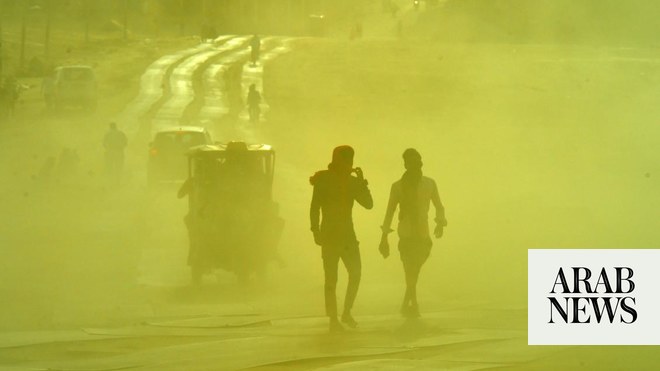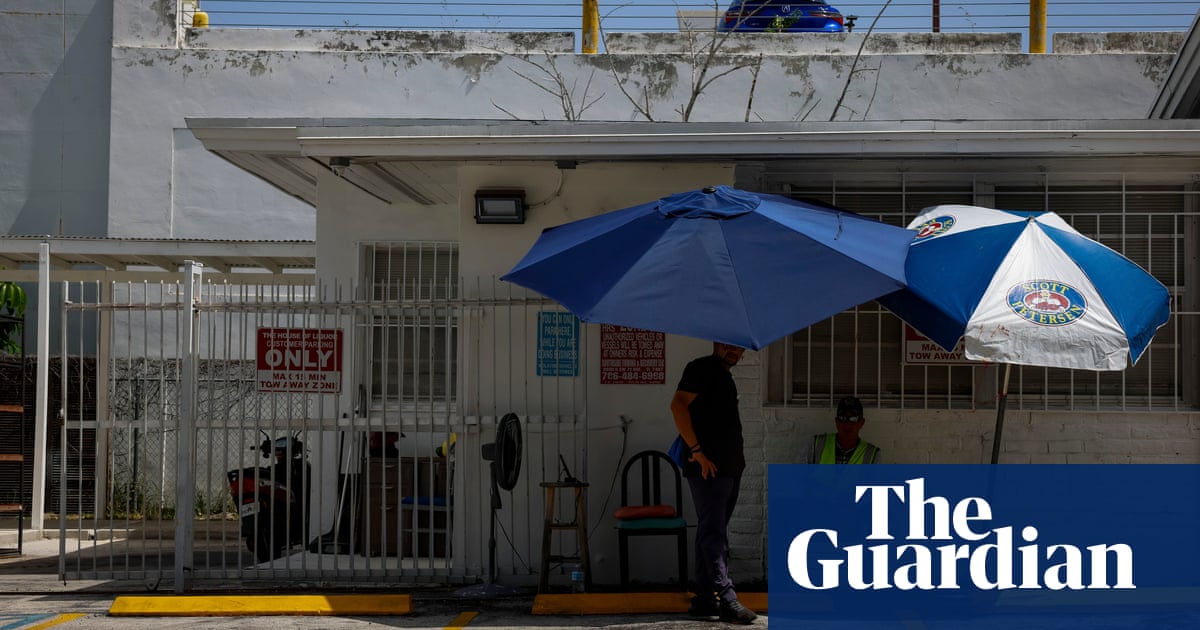
More than 134 million people were under heat alerts on Thursday morning, as a brutal and potentially historic heatwave sent temperatures soaring across the US on Independence Day with little chance of relief over the next week, even after dark.
Forecasters warned that high overnight temperatures and the long-lasting duration of the extreme event will increase the danger, posing additional risks to human health and the rapid spread of wildfires.
“This is going to be a severe, prolonged, potentially record-breaking heatwave,” said the climate scientist Dr Daniel Swain during a discussion of the heat event earlier this week.
Through California’s interior, into the desert south-west, and in parts of Oregon, temperatures are expected to spike up to 115F (46C), according to a Wednesday forecast from the National Weather Service (NWS). Through the end of the week, the heat will spread north into Oregon and Washington and send highs soaring throughout the western region.
All-time heat records could be broken in several locations, including Las Vegas and in Redding, California. “Dozens of record highs are possible, expressing the rarity of this early-July heatwave,” NWS forecasters wrote, adding that the heat will be dangerous for everyone who is exposed to it. The agency cautioned anyone in impacted areas to stay inside, stay hydrated, and to check on vulnerable neighbors.
“Intense and long duration heat building in the west will be extremely dangerous and potentially deadly if not taken seriously,” federal forecasters said in an update. “The multi-day nature of the heat and record warm overnight temperatures will cause heat stress to build in people without adequate cooling.”
Dangers are high even in areas that won’t rank among the hottest this week, including in the typically mild San Francisco Bay Area, where many residences and businesses are not equipped with air conditioning.
“It is very likely that we will see a number of heat-related fatalities throughout this event,” forecasters with the NWS Bay Area wrote in an update on Wednesday afternoon, noting that unhoused people and those who can’t access or afford cooling “may not be able to escape the lethal heat”.
NWS agencies across the country are urging residents to take the event seriously, cautioning all to take extra care during outdoor activities connected to Independence Day celebrations – from picnics to parades – and drinking alcohol or other dehydrating beverages.
The brutal conditions were being caused by a ridge of high pressure just off the west coast and a separate ridge that spawned heat warnings and advisories from Kansas and Missouri to the Gulf coast states according to the NWS.
The extreme heatwave is also dangerously-timed, raising the risk of wildfires during Fourth of July celebrations when they are more likely to spark because of fireworks, barbecues and other flammables.
Firefighters across California are already battling multiple blazes, including one that broke out on Tuesday and quickly swept across more than 3,000 acres. The Thompson fire is burning near the city of Oroville, about an hour outside Sacramento, California’s capital. So far nearly 30,000 residents have been ordered to evacuate.
The heat arrived with gusty, dry winds in the northern part of the state, where the utility Pacific Gas & Electric implemented public safety power shutoffs in parts of 10 counties to prevent wildfires from being ignited by downed or damaged electrical wires.
California has had a spate of spring and early summer wildfires, thanks to an abundantly wet winter that left landscapes across California coated in grasses that were primed to burn once the weather warmed.
The excessive heat will only dry landscapes and vegetation further, adding to the threat of an active wildfire season for months to come.
While this heatwave may be the worst to hit the US west so far this year, it likely will not be the last. The human-caused climate crisis is expected to cause extreme heat events that last longer, are larger, and are more intense and experts have said this week’s weather is part of a troubling trend. 2024 is already on track to become the hottest year on record.
Extreme heat is the most deadly type of weather-related disaster, and the toll is already on the rise. Forecasters warned the dangerous weather conditions this week will pose health risks to the majority of the population, especially those unable to access cooling.
Earlier this week, as temperatures spiked in Sacramento, Katherine Powers sought refuge in the shade of Cathedral Square. Powers, who is homeless, sipped sparkling water while resting her bare feet on the shaded sidewalk.
Powers said she had loaned her shoes to a friend. She had not yet visited one of Sacramento county’s nine “cooling centers,” she said, because of the difficulty in bringing all the possessions she carries.
“I’m just going to go to a park with a water fountain just to stay cool, stay in the shade and just keep pouring water on me, basically,” she said. “There’s not too much that I can do.”












